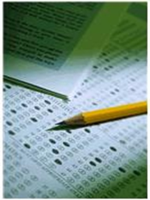Assessment:
Universally designed assessments are meant to increase a students' ability to demonstrate learning, but they do not change what the assessment is designed to measure.
Flexible assessments can resolve many of the problems that exist with paper-and-pencil tests, particularly as tools for guiding teaching. Some traditional tests give you valuable information if you are evaluating trends and information about groups, but as an accurate assessments of an individual students' skills, knowledge, and learning, these assessment tools are flawed.
When designing assessment:
- Make expectations (objectives, rubrics, grading) explicit from the start
- Use multiple checks for understanding to shape instruction throughout a lesson
- Include a choice of options that provide greater support or challenge
- Includes multiple ways for students to show what they know
“When the cook tastes the soup, that’s
formative
assessment;
when the customer tastes the soup, that’s
summative
assessment.”
(Black ,1998)

